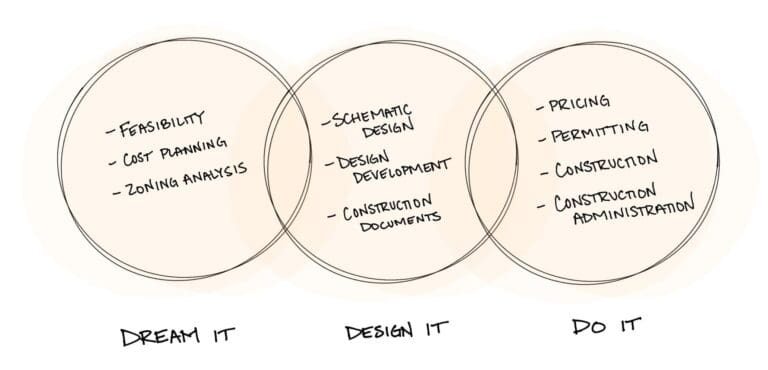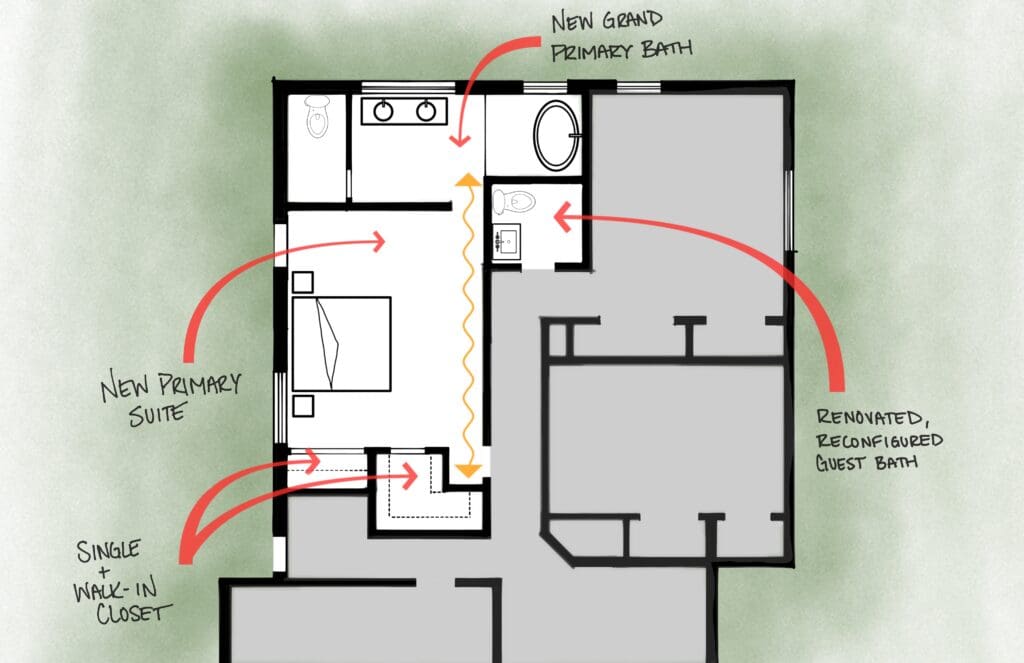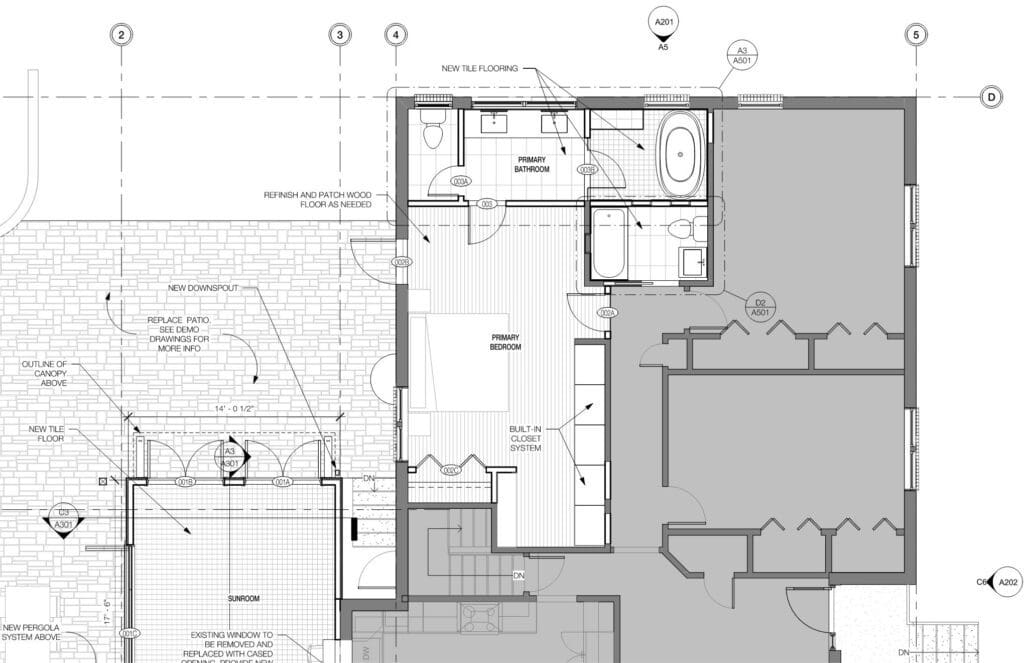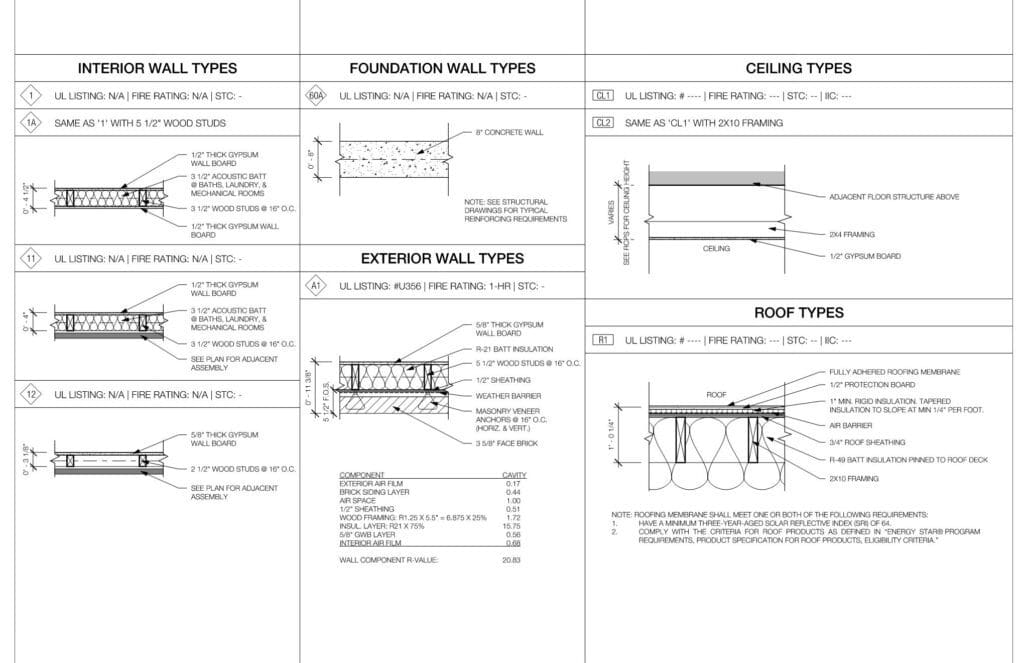Introduction
October’s blog, “Why Hire an Architect?” gave a brief overview of the many services an Architect can provide. This month’s blog will dive a little further into the services provided by looking at them through the context of phases.
There are multiple steps involved in the realization of an architectural project. These steps can be grouped into different phases that broadly indicate what part of the process a project is in. Learning about these architectural phases can help a client understand what an Architect can do for them, the sequencing of a particular project, and even the fees associated with a project.
Architectural projects will have nuanced differences that can result in various steps, but, in general, the phases can be broadly categorized as follows: pre-design, design and construction documents, pricing/bidding, permitting, and construction administration. An Architect/firm may offer one, some, or all of these phases. Some may offer additional services that can be integrated into these existing phases.
Architectural Phases
Pre-Design
As the name suggests, the pre-design phase encompasses any work that precedes the development of schematic drawings. This is the phase where a project idea is born, and its feasibility is researched. An Architect can help with various items in this phase, including feasibility studies, cost planning, zoning analyses, documentation of existing conditions, and more.
Design & Construction Documents
The design and construction documents phase encapsulates what people in the design and construction industry refer to as schematic design, design development, and construction documents. Schematic design is the preliminary exploration of spatial possibilities for a project. Often, multiple schemes are presented to a client in order to convey the potential of the site and ultimately choose a design direction. Once a scheme has been selected, the details are further fleshed out in the design development phase. Coordination with the necessary professionals, such as structural consultants, mechanical/electrical/plumbing (MEP) consultants, civil consultants, etc. is an important aspect of this phase in order to make sure all spatial and functional components of the project work together. In fact, coordination with consultants can begin even earlier depending on the preferred project structure and timeline. Once all major decisions have been made, the construction documents, which have all of the drawings and details pertinent to construction of the project, along with the stamps of the Architect and all consultants, can be submitted. These documents will then be submitted for pricing, permitting (if required), and construction.
Pricing/Bidding
There can be some overlap between the pricing/bidding phase and the design & construction documents phase. If pricing is a major component in certain design decisions, a set of drawings with all pertinent information can be printed and released in the design development phase, so that adjustments can be made sooner rather than later. Otherwise, pricing/bidding can be obtained once the contract documents are finished – the process will be the same, regardless. For a smaller project, like a single-family residence, one or more contractors are asked to respond with a pricing estimate. With one or more estimates in hand, the owner can first decide if they’d like to adjust the design in any way to alter the pricing estimate. If decisions are made to reduce the pricing estimate, such as choosing more affordable materials or reducing the number of windows, this is called “value-engineering.” The owner can also then decide on which contractor to bring on board, based on their qualifications and their estimates. For larger projects, pricing can take the form of “bids,” where the pricing documents are released for any interested contractors to submit their estimates, along with their qualifications, in hopes of acquiring the project.
Permitting
Many projects require permitting, which is the process of a jurisdiction reviewing the construction documents to ensure that specific requirements are met. This means that the construction documents must be complete in order for a project to be reviewed and a permit to be issued. Construction documents can be finished “to permit,” meaning that they are completed with all necessary information for permitting decisions to be made, but have a few, non-permit related details to finish while waiting for the jurisdiction’s comments. Construction documents can also be finished to “issue for construction,” which is when all decisions and details have been completed and the drawings are ready to be used for the construction of the project.
When the jurisdiction finishes reviewing the submission, they may have comments that require some design changes. Typically, these changes should be very minimal in nature. However, in the event that the jurisdiction has longstanding opinions that are not published anywhere for an Architect to review, sometimes those changes can be significant, which may require some back and forth between phases.

Construction Administration
Construction administration is typically the final phase of architectural services. During construction of the project, the Architect can be on site at regular intervals to ensure that the project is being built according to the contract documents, and that design is coming to life as intended by both the Owner and Architect. The Architect will also respond to all contractor requests for information by providing design guidance, preparing sketches, and addressing other issues that may arise. Finally, the Architect can perform “punch list” visits, where the construction, in its final stages, can be observed and evaluated for any final remarks or adjustments. The Architect will check for quality, functionality, and completion.
Check out the video to see Ven Studio assisting Soto Architecture and Urban Design with their punch list for the Woodmore Apartments in Bowie, Maryland!
Construction Administration
Construction administration is typically the final phase of architectural services. During construction of the project, the Architect can be on site at regular intervals to ensure that the project is being built according to the approved drawings, and that design is coming to life as intended by both the Owner and Architect. The Architect will also respond to all contractor requests for information by providing design guidance, preparing sketches, and addressing other issues that may arise. Finally, the Architect can perform “punch list” visits, where the construction, in its final stages, can be observed and evaluated for any final remarks or adjustments. The Architect will check for quality, functionality, and completion.
Check out the video to see Ven Studio assisting Soto Architecture and Urban Design with their punch list for the Woodmore Apartments in Bowie, Maryland!
Phases, In Summary
Architectural phases help guide a project from conception to realization. Although there can be some overlap and back and forth between phases, the general flow of a project is still typically as outlined above. Remember, an Architect may not offer services in every one of these phases. Likewise, an Architect may offer additional services that are typically done by consultants, such as interior design or design-assists with structural or mechanical drawings. All of these services, organized by their phases, are offered clearly in the Owner-Architect Agreement – which is the subject of next month’s blog!




